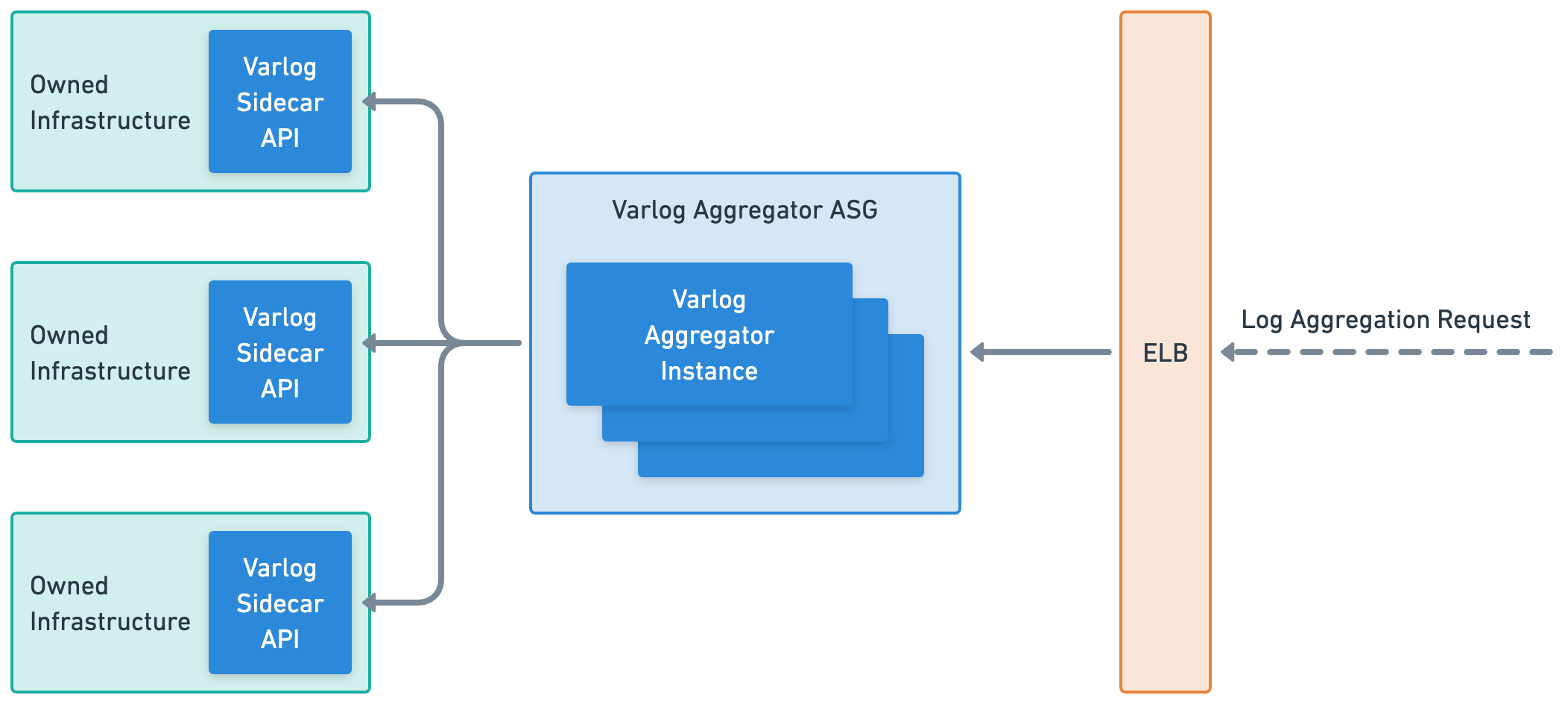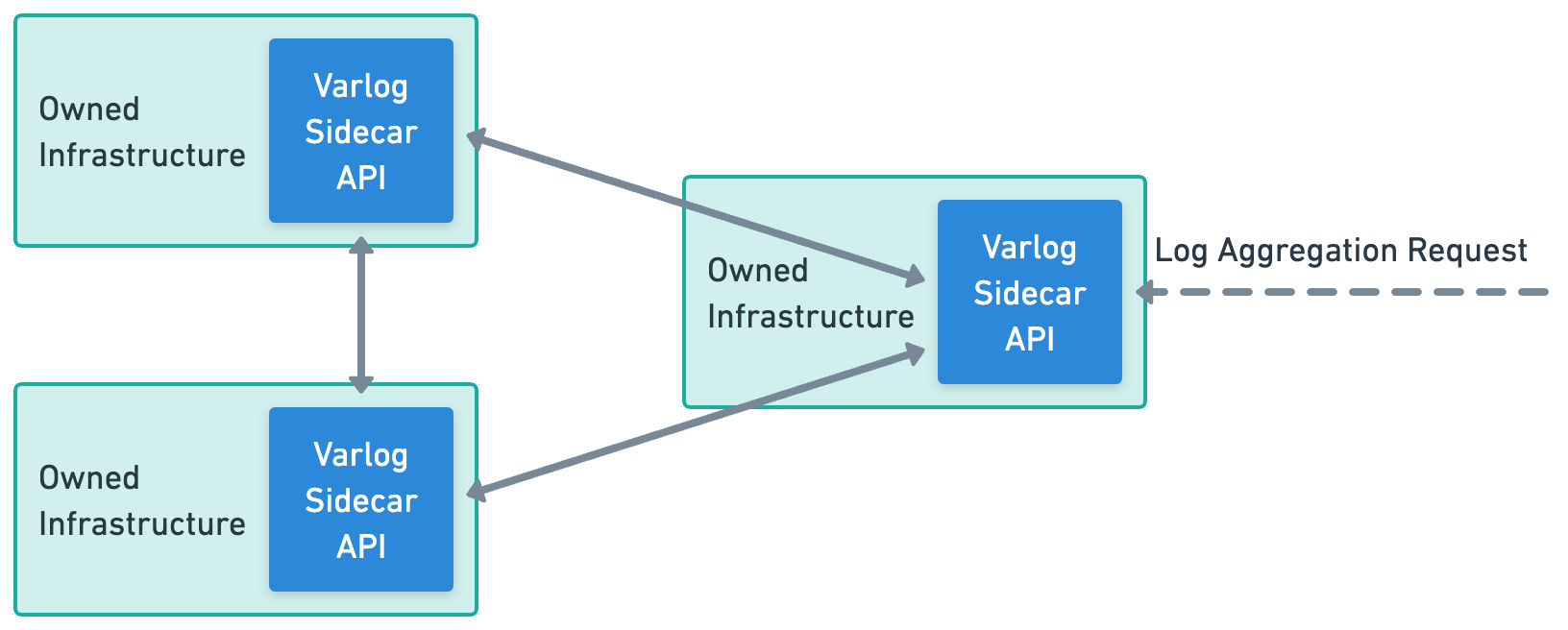System Design
Since Varlog can be started as both a sidecar and an aggregator, it is suited well for both large and small applications. This section includes two potential architecture setups, each with its own unique benefits.
Both of these architecture setups are designed to be highly scalable and flexible, allowing users to tailor their log management process to meet their specific needs. Users can easily manage their log data, troubleshoot issues, and ensure that their applications stay up and running smoothly.
Aggregator Architecture

The first is the aggregator architecture, which is ideal for enterprise-grade applications with a large number of different services running. This architecture features an auto-scaling group of Varlog aggregator instances which are responsible for aggregating logs from sidecar API instances. The aggregator Varlog servers are highly scalable and can handle large amounts of log data, making them a great choice for organizations with complex and highly distributed systems.
While the aggregator architecture is a great choice for enterprise-grade applications with a large number of different services running, it may not be the best option for smaller users who have fewer servers to manage. This is because the setup and maintenance of an auto-scaling group of Varlog aggregator instances can be complex and time-consuming, and may not be necessary for smaller-scale log management needs. Additionally, the added complexity of the aggregator architecture will increase the cost of operation and may not provide enough added value for smaller users who can benefit from the simplicity and flexibility of the mesh network architecture.
Mesh Network Architecture

The second potential architecture setup is the mesh network architecture, which is perfect for smaller users who only have a few servers. In this architecture, each sidecar also acts as an aggregator, allowing any sidecar to be queried for logs from all other instances. This setup is highly flexible and allows users to quickly and easily access their logs without the need for a centralized log management system.
Since the mesh network architecture provides a simple and flexible option for smaller users, it may not be the best choice for larger, enterprise-grade applications with a larger number of different services running. One of the main reasons for this is that the mesh network architecture can become more difficult to manage as the number of servers increases. Paradoxically, this can also lead to higher operational costs and may require more time and resources to ensure that all nodes are properly configured and functioning correctly.
Additionally, the mesh network architecture may not provide the same level of performance and scalability as the aggregator architecture for larger applications. As the number of logs and requests increase, the mesh network may become overwhelmed and unable to provide the necessary level of responsiveness and speed that is required in enterprise-grade applications.
In this section, we've discussed the two possible architecture setups of Varlog, highlighting the benefits and trade-offs of each. The aggregator and mesh network architectures both provide distinct advantages depending on the scale and complexity of the application. In the next section of the documentation, we'll dive deeper into the trade-offs and design choices that were made while building Varlog. By examining the decision-making process, the goal is to provide readers with valuable insights and lessons learned that can be applied to their own projects.